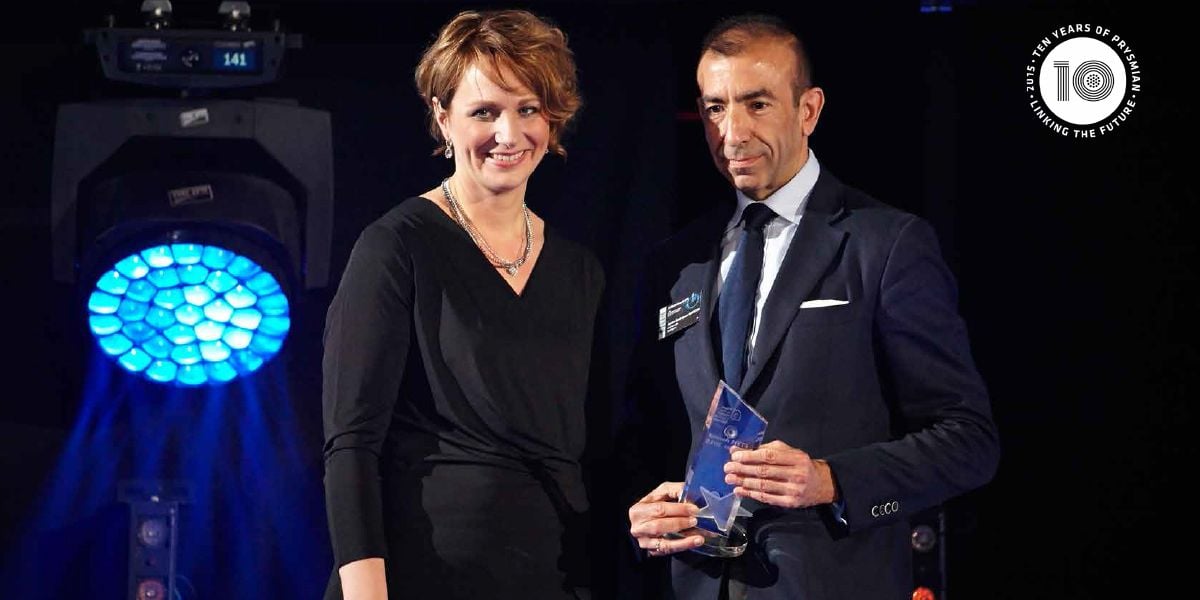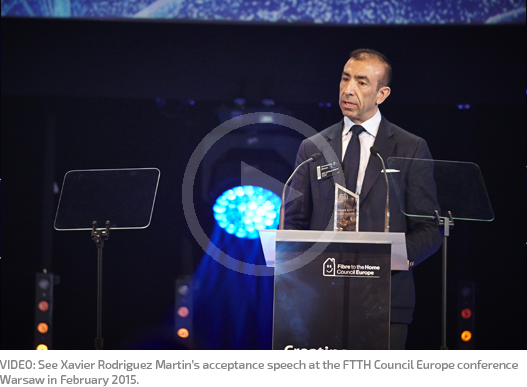Why did you receive the award and how do you feel?
“We greatly appreciate this unexpected recognition. We’ve worked very hard over the last years to craft a profitable, sustainable business model adapted to the challenges of Portugal’s lower-income rural regions. This has been realised through technological innovation, including the design of a cable to effectively serve lower density areas, operational efficiency and financial structuring, with governments and European bodies providing part of the initial outlay required and supporting longer-term funding. Of course, learning from previous experiences and crafting a specific vision providing fibre-based services to non-urban environments were also vital. From the FTTH Council Europe perspective, our work has significantly contributed to accelerating the deployment of fibre networks in Europe. In addition, the European Commission considers dstelecom’s network to be a European Best Practice.*”
“I believe fibre uptake will be a consequence of a series of concrete steps. For instance, in Portugal’s inner regions, many schools and health delivery centres have been shut down to save public money. Migrating some public services to the newly deployed optical fibre network could partially compensate the affected population. A huge impact could be achieved with just a small percentage of the money saved on the public budget.”
“Regarding the business community, industrialization of the Internet is moving critical business processes to the online world. This poses new challenges to telecom networks in terms of capacity, latency and reliability. In Portugal, every Request for Proposal (RFP) launched today requires, explicitly or implicitly, fibre-based services. The real challenge here is to accelerate substitution of legacy services and equipment. I think telecom operators should take clear leadership on this migration, given the operational and strategic advantages this transformation should bring them. This will not happen on a big scale, however, until the industry fixes a new, more sustainable business model and bank credit flows through the system again.”
The telecoms industry is going through a period of profound change in the way it creates value. Clients increasingly pay for connection, and for their experience. The first depends on the operator, the second is more associated with applications and devices, which are independent of the operator. The traditional Telco revenue driver - services - are increasingly irrelevant, as they are becoming mere applications, sometimes provided free of charge.
Banks are now adding an industryspecific element to a structural lack of funding: higher credit risks lead to difficulty financing telecom operators, whose business models are changing profoundly.
Which fibre projects have you completed or are you working on?
“Our focus is getting the most from our current network. This covers 20% of the country, 7% of the population and 5% of Portuguese GDP. With 9,000 km of FO cable and 4,500 km of unique routes, we are facilitating the rural population’s access to the broadband service packages that the rest of the population enjoys. We are exploring a wholesale model and have all the biggest retail operators as clients. We plan to increase the capillarity of our current networks and analyse new deployments in different regions. Finally, we have a portfolio of innovation projects, including a smart city pilot and integration of wireless and wireline broadband technologies and services.”
Which regional differences do you see between the different fibre markets your company operates in? “Serving rural areas is significantly different from serving city clients. The local loop must be sometimes extended to accommodate more isolated houses. Uptake is quicker, because the population is profoundly underserved, and satisfaction levels are tangibly higher given the new experiences customers enjoy with services they couldn’t previously access.”
Can you explain something about your ‘operator of operators’ concept and the Minhocom/Valicom inter-municipal fibre network companies dstelecom helped set up?
“Minhocom and Valicom are backbone networks that link other carrier’s nodes (Base Transceiver Station, Point of Presence, etc) and are less granular than the rest of our networks, which were designed with FTTH services in mind. The ‘operator of operators’ concept serves retail operator clients with a set of managed services. These go beyond traditional carrier services and can include the full provision process for their end clients or building segments of their networks.”
How would you describe your market approach?
“Long term contracts allow rural clients’ local loop costs to be lower than comparable urban costs, because they pay a fixed sum for aggregation and interconnection services. This model allows them to be very aggressive and competitive in the deployment of their triple-play services. Marginal network cost for each service is low and the contribution margins therefore higher. This constitutes a win-win-win model for the final individual client, our partner operators and ourselves.”
“In addition, we try to align commercial plans and activities with our client operators, to effectively support them in the back office when they launch focused campaigns in rural areas. This means, specifically, providing support so the operators can handle peaks in specific geographical areas, which are a consequence of the commercial success of their campaigns.”
Can other European countries learn from the Portuguese FTTH approach?
“For different Portuguese local governments, optical fibre symbolises our country’s efforts to move away from historical underdevelopment. This has prompted the creation of a regulatory, institutional and market environment with significant doses of innovation in a diversity of fields, including access to physical infrastructure regulation; business model and service innovation and rural broadband development. European markets may differ in terms of level of competitiveness, maturity and organization, but the Portuguese dynamics might offer some clues on how to overcome the traditional barriers to network deployment and service adoption.”
There are several valid approaches to accelerating and stimulating broadband rollout, in our opinion. At the end of the day, the objective is to close the gap between the most and least developed regions. For that purpose, we could use more general-purpose tools, such as taxes, subsidies or soft loans; industryspecific approaches, such as regulation or a universal service fund; or hybrid drivers, for example rural plans or a digital agenda. In the case of Portugal, public funds have been the main driver for the deployment of rural broadband. For richer countries, I believe that positive incentives for investment (for instance, tax credits) might be more appropriate.
What’s your company’s relationship with Prysmian?
“We have used Prysmian cables for all our backbone and roughly half our access network. We have worked together with Prysmian engineers to architect the most adequate, and sometimes innovative approaches to fulfil connectivity challenges we have faced for our networks.”


